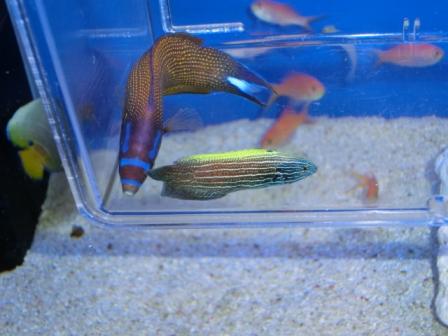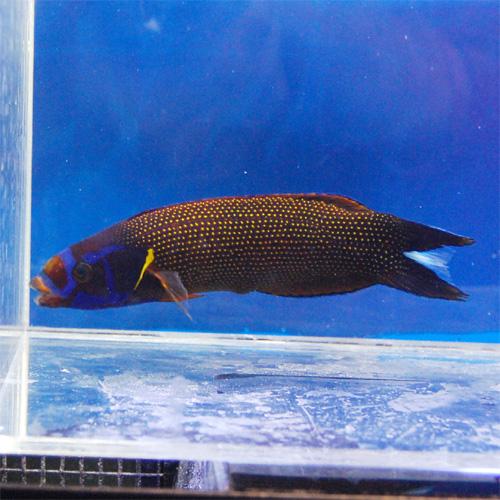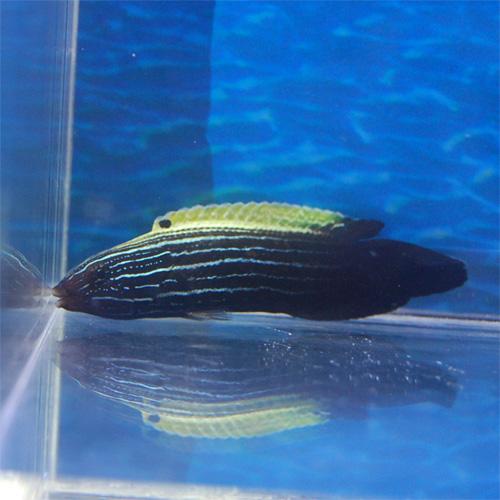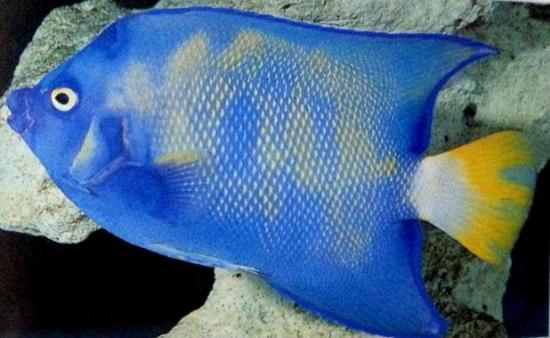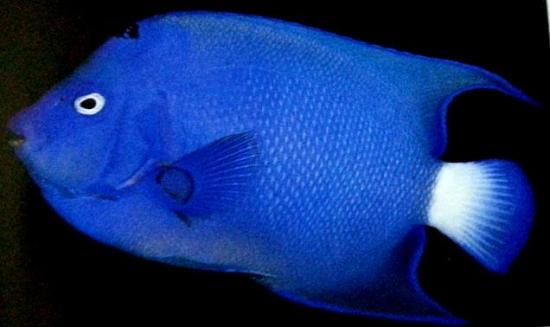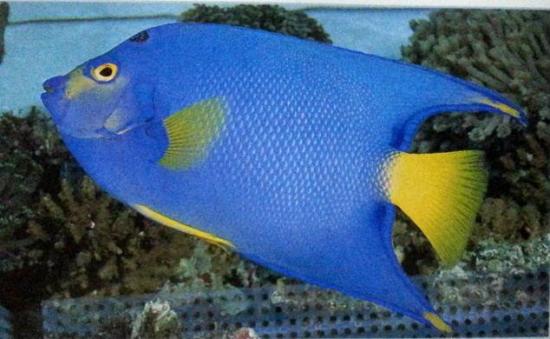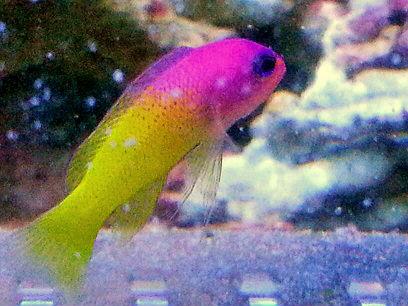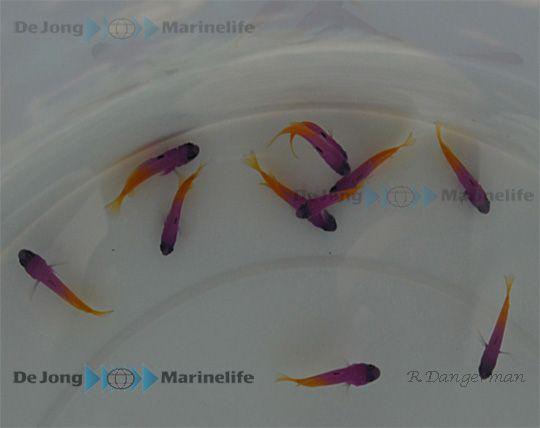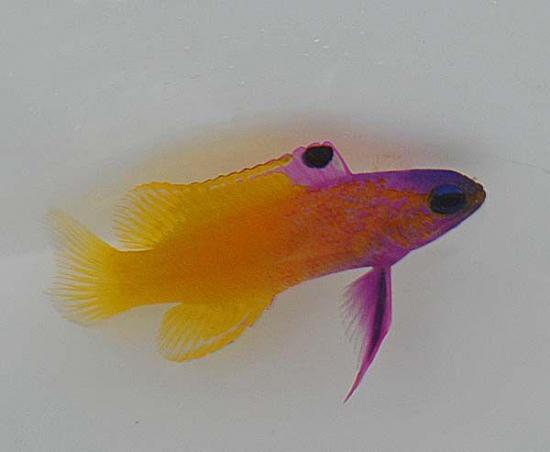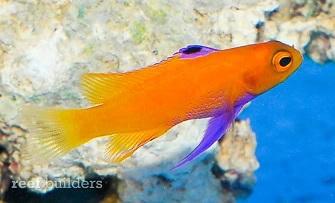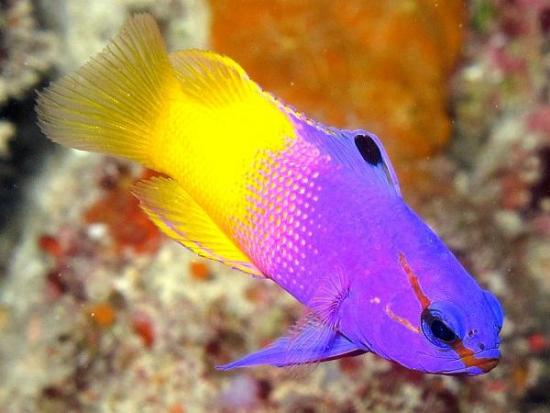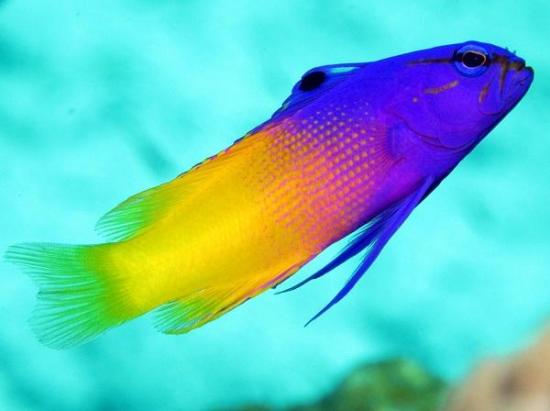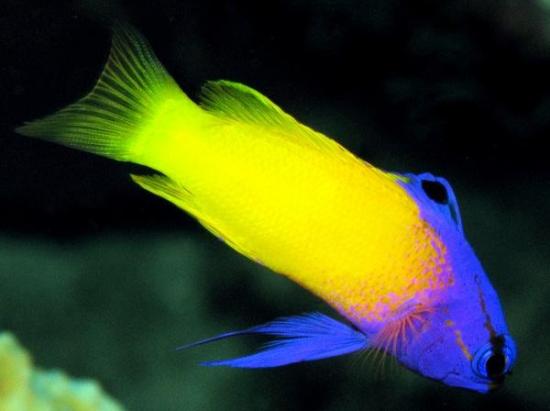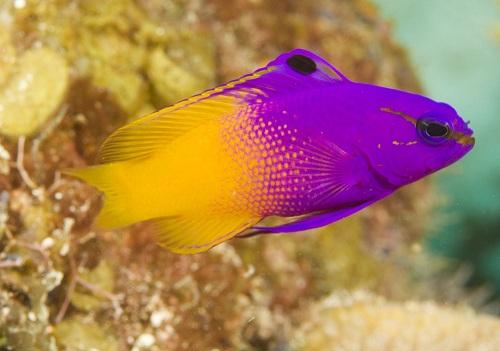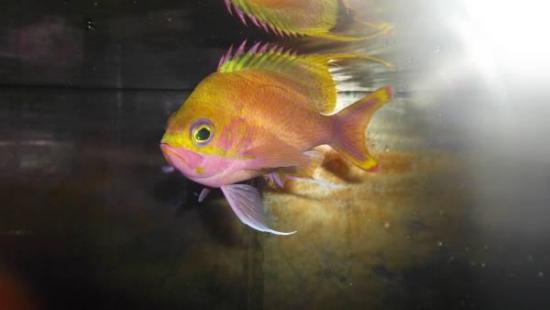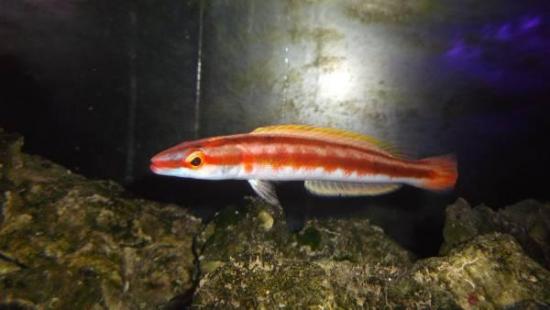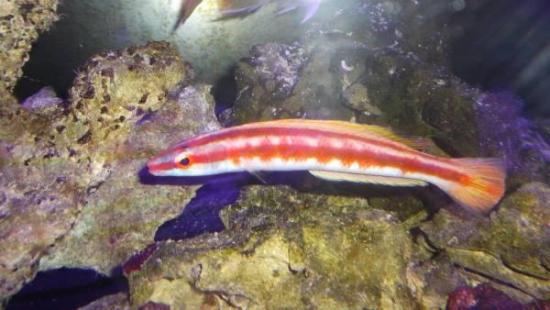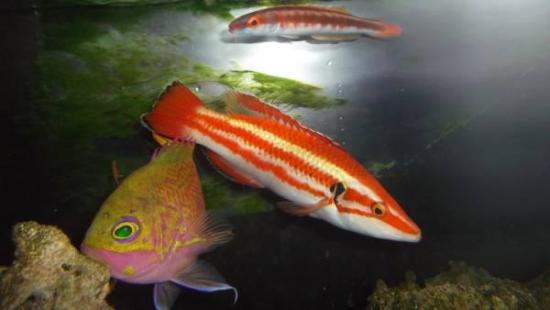-
Posts
5,302 -
Joined
-
Last visited
-
Days Won
29
Content Type
Profiles
Forums
Gallery
Everything posted by Digiman
-

OMG! Look at these hybrids and rare fishes!
Digiman replied to Digiman's topic in FOWLR (Fish-only with Live-rock)
Juvenile Kingi angel caught in South Africa coast while snorkelling! -

OMG! Look at these hybrids and rare fishes!
Digiman replied to Digiman's topic in FOWLR (Fish-only with Live-rock)
Cant tell the difference between acanthocepola and cepola genus. They both belong to the bandfish family which means very difficult to keep alive. -

OMG! Look at these hybrids and rare fishes!
Digiman replied to Digiman's topic in FOWLR (Fish-only with Live-rock)
What is this? Acanthocepola? -

OMG! Look at these hybrids and rare fishes!
Digiman replied to Digiman's topic in FOWLR (Fish-only with Live-rock)
Labropsis Xanthonota (Comet wrasse, Yellowback tubelip) Very rare yellowback tubelip pair in Japan. Male Female Note: Tubelip wrasse natural diet is coral polyps ONLY. As such it is an extremely difficult fish to keep alive in our tank. Females are common in the wild whereas males are much rarer. -

OMG! Look at these hybrids and rare fishes!
Digiman replied to Digiman's topic in FOWLR (Fish-only with Live-rock)
Update on the juvenile personatus in Japan. The SPS and corals are all gone. The personatus has grown so much and is now a beautiful female! See video -
Here is a famous aberrant juvenile in extreme yellow coloration with very little blue, acquired by BBox last year. This fish came in through their carribbean shipment. This fish is so rare because the aberration happens at such a young age which is very unusual as aberrations are usually found on large adult fishes like the st paul queens. It will be very interesting to see how the color of the fish progresses in captivity.
-
Although my preference is a blue queen, the yellow queen (mostly from brazil) is also not easy to find, in fact it is harder to find! Shown here is a very yellow queen. I think Bigbird or someone else here kept a Brazilian yellow queen as bright as the fish above. So if u see this thread pls update us with some pics!
-
Sadly i do not have any pics of the fish and that was many years back. I kept it for only a few weeks before returning it to the LFS. The fish was too big for my 5 by 2 tank. Width of tank is the problem, it could not turn properly and it will be very sad for the fish if i keep it any longer. As i did not keep the fish for long so i cant comment if it was able to hold the blue. But when i got the fish it was very blue, almost as blue as the piece u posted in the youtube video above.
-
Let us all share our experiences with one another. Fish discussion like this is will bring our hobby to a greater height.
-
Here are two st paul queens also from japan. All documented to revert to normal coloration. The latter piece reminds me of the cilpperton angelfish!
-
The blue on queen angels are known to fade in captivity although Belize queens are believed to hold their blue better. When i had my 5ft tank i kept a huge 14" (excluding streamers length) carribbean queen angel which i bought because of its mesmerizing blue. So carribbean queens can also be as blue as the Belize ones. Here is one extreme blue queen from the usual carribean collection point, florida. An old fish in Japan but dont think the blue held throughout its captivity.
-
This is an interesting experience u hav. Most if not all fishes in captivity will definitely pale in comparison to their wild counterparts after some time. In the wild there is a huge swimming space, rich biodiversity and he present of a huge social colony to keep their colors up. We can never replicate the same living conditions as in the wild. However royal gramma is not known to lose its vibrant colors overtime. It may pale out a bit but will generally still hold its bright colors. I hav kept them before for lonh without much loss of colors. I hav seen reefers royal gramma they kept for v long n v big and it is still as vibrant as ever. So ur fish could hav pale out due to external factors like water quality or subjected to harrassment from other fishes and such. To prevent paling out feeding a varied diet with high quality food may help. And royal gramma is not picky, so it will eventually eat almost anything u drop into the tank.
-
Yes lets help each other to keep a lookout. I will post here again if there is news or updates on its availability.
-
Thank you everyone. I m flattered. There are a lot of reefers here who love fishes as much as i do and i look forward to everyone sharing their experiences, opinions and knowledge about fishes in this forum.
-
Hi, For clarions the smaller the size the more expensive and valued it is. My fish was bought at a much higher price. I m actually selling it at a loss as long as there is any interested buyer. Thank u.
-

Fish for sale: Johnsoni fairy wrasse
Digiman replied to Digiman's topic in Sell off/Pasar Malam Shop
up -
Hi jeremy, I lost my lipogramma klayi due to feeding problem. Very tiny but expensive fish. Unlike royal gramma the lipogramma klayi turns out to be extremely shy and not easy to feed. It lost a lot of weight and died in the end. I will not try the klayi again. This was my klayi that died. A very beautiful fairy like basslet with long finnages that the royal gramma cant compare with!
-
Hi Sengreef, Yes that is a very similar looking gramma known as the brazilian gramma (gramma brasiliensis) which is a brazil endemic. Royal gramma is found in carribbean while brazilian gramma is only from brazil. Brasiliensis is similar in coloration as the royal gramma but has a shorter stouter body and bigger head and mouth and as such makes it look like a beastly version of the dainty royal gramma. And u r right, brasiliensis used to be as common as royal gramma but it has not been available since Brazil banned the exportation of its native species since a few years back. However not many speak about this fish despite its absence for so long because to most the royal gramma is a more beautiful and popular species than brasiliensis that will suffice. The pictures u posted above are beautiful images of the brasiliensis. Although there are no wild caught brasiliensis now, last year in europe there is a batch of captive bred gramma brasiliensis available through Dejong marine. Shown below is the small batch of CB gramma brasiliensis available at Dejong last year. Thanks to captive effort that we still have this fish in the market. But that said trying to get hold of this captive bred specimen will still be very tough because there has not been enough production to offer to the mass.
-

Fish for sale: Johnsoni fairy wrasse
Digiman replied to Digiman's topic in Sell off/Pasar Malam Shop
Up -
Up
-
Hope this information on royal gramma, gramma mutation and gramma dejongi has helped basslet fans here gained some new knowledge on this fish. And lets hope to see either a gramma mutation or gramma dejongi landing at our shore in the near future.
-
There exists an aberration form of royal gramma with an extreme high amount of yellow extended up to the forehead leaving only patchy purple. So far this fish is only available through Dejong MarineLife Europe. They call it by the name of "Gramma Mutation" and this fish fetches up to $700. They are rare and hard to get. So far you can count with one hand the number available each year. Here is a new specimen available at Dejong. And here is a video of a beautiful specimen that was sent to BBox last year. Due to the abnormally high amount of yellow, some believe this so called "Gramma Mutation" could be a hybrid between the common royal gramma and the newly discovered gramma dejongi (see below)! Myself i am leaning towards an aberration instead of a hybrid. Shown below is the beautiful gramma dejongi which is clearly a distinct species of its own. It is found only in the waters of cuba and due to the US embargo against Cuba, this fish will continue to be absent in the states. Those few that had been available through Dejong, two went to Chingchai of Thailand and the rest to went Japan or stayed in europe. A beautiful fish with a huge price tang. It costs around $4500 and even higher in Japan.
-
The amount of yellow on a royal gramma is highly variable. And how much yellow differs by the geographical location where it is found. Here are a few examples. Common coloration, the only ones we are getting here in singapore. Shown below is a Belize specimen. With slightly more yellow. Nassau Bahamas. And now with a lot more yellow. Grand Cayman. These Grand Cayman variant are gorgeous but sadly not collected for the trade.
-
Care Level: Easy Temperament: Peaceful Reef Safe: Yes Max Size: 3" Diet: Carnivore Origin: Caribbean, Tropical Western Pacific Availability: Very common Price: around $25 to $35 This is a great beginner fish and is an ever popular fish. It is hard to find any reefer who has not kept a royal gramma before. It is beautiful and hardy and attains only 3" maximum size. But because it usually grows slowly and stays smaller, it makes a good nano fish if u start with a small one. To some new reefers it may seem like an overcharged bicolor dottyback. However after having kept both, one would definitely tell you if you are facing trouble with your bicolor dottyback turning out to be a terror, why not spend a bit more and try the royal gramma. When you are purchasing a royal gramma ,go for the largest size you can find in the batch. Bigger ones are stronger and healthier. Smaller ones tend not to do as well as the bigger ones especially when it comes to adapting in a bustling tank with a lot of fishes. They may hide and become stressed. However once past acclimatisation, royal gramma is a strong fish that will come out of its hiding place to feed and even hold itself up against the bigger, boisterous fishes.
-

OMG! Look at these hybrids and rare fishes!
Digiman replied to Digiman's topic in FOWLR (Fish-only with Live-rock)
The super expensive and beautiful Odontanthias Chrysostictus Terelabrus sp. Chrysostictus + terelabrus sp. + masudai hog


